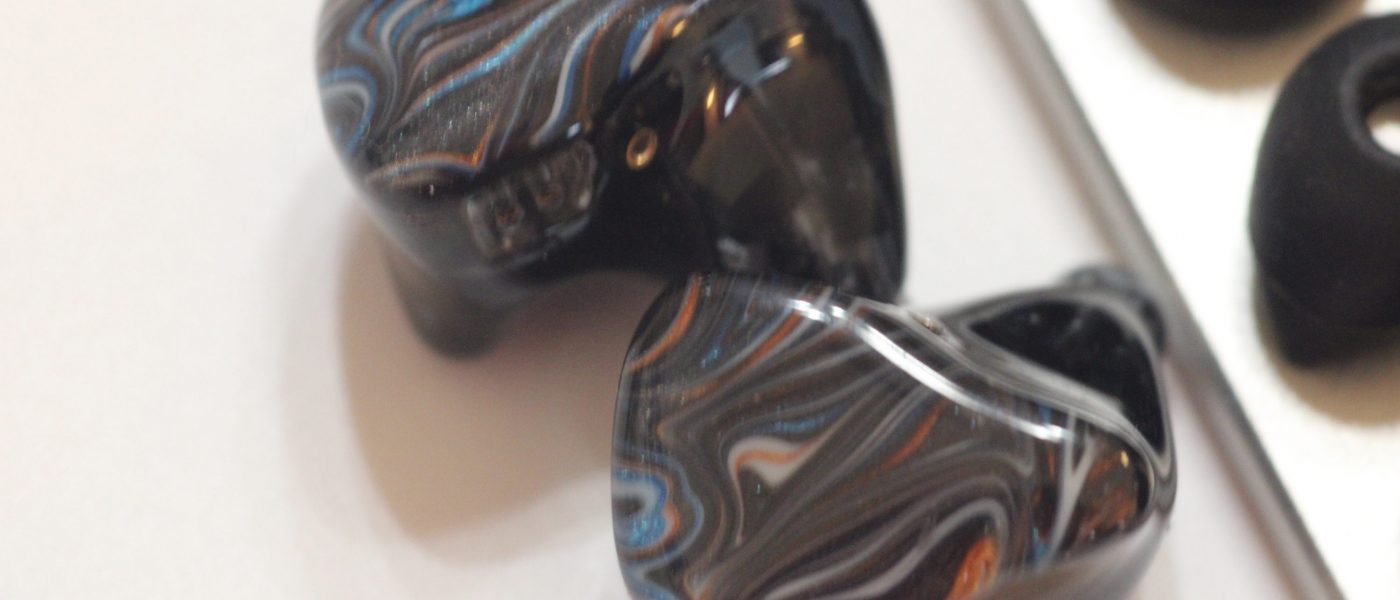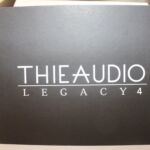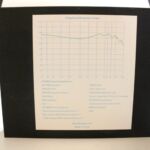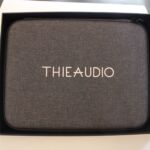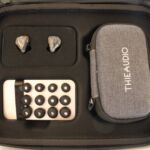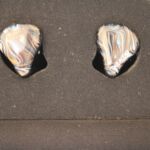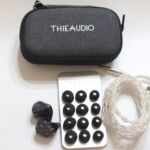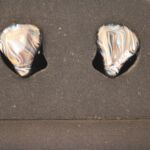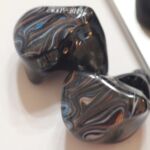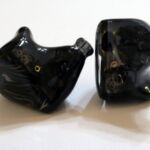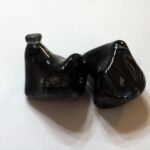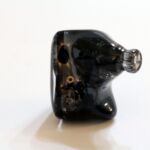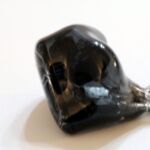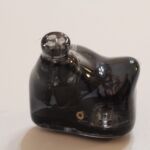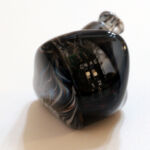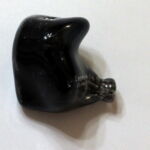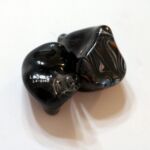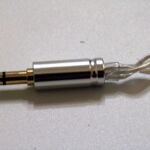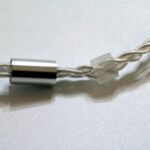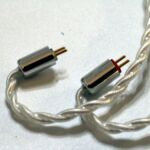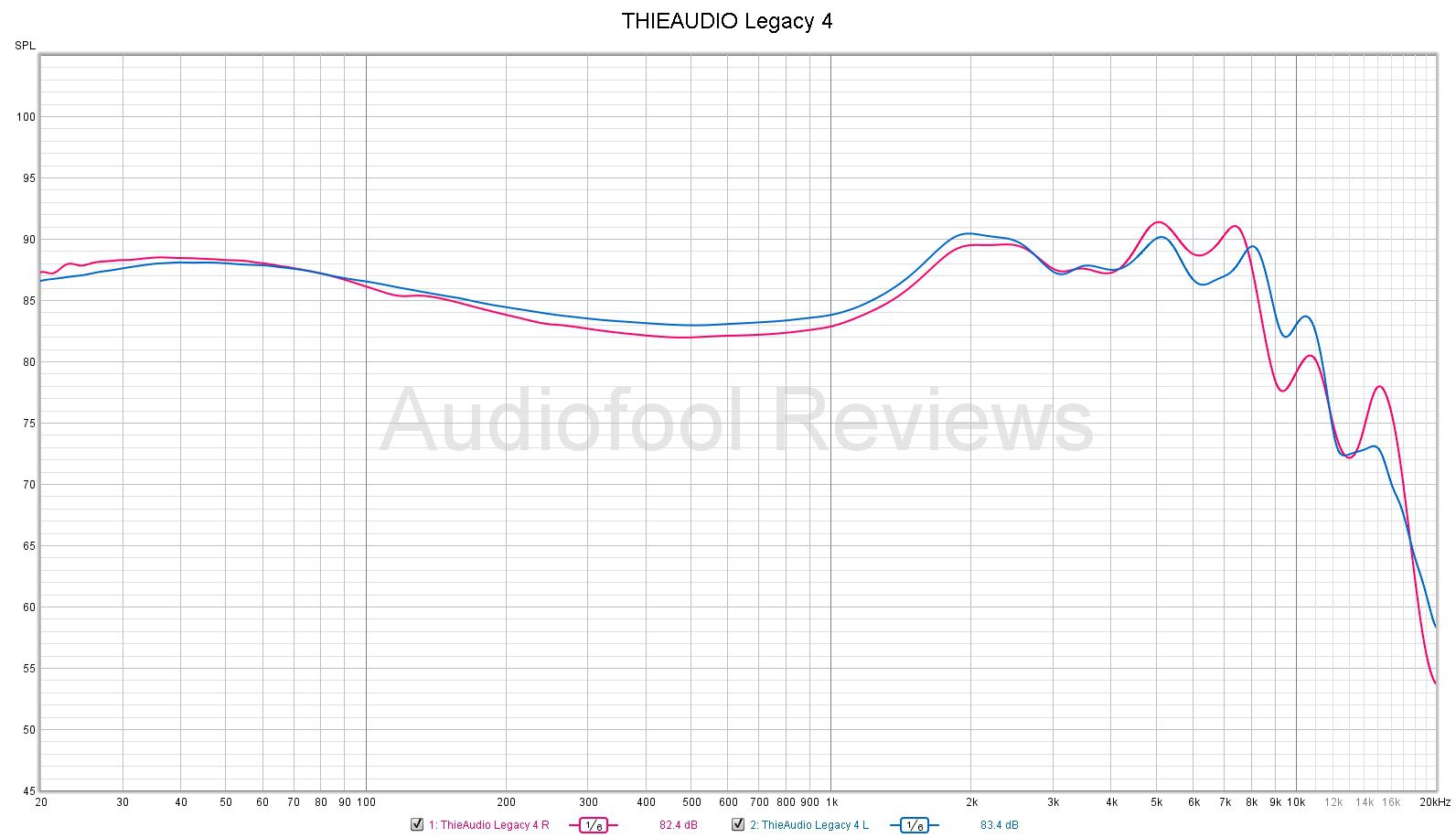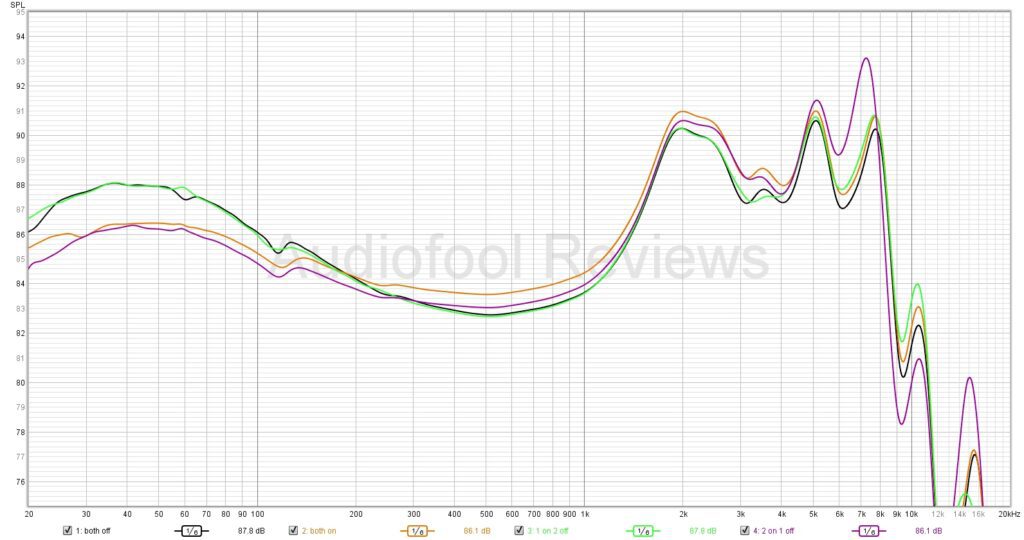Thieaudio Legacy 4
disclaimer: I borrowed the Thieaudio Legacy 4 from Ngoshawk Sounds for purposes of this review. Ngoshawk runs a great site too so if you haven’t visited it yet, please do. I have had no contact with ThieAudio regarding this review, nor have I received any remuneration for same. If you have an interest in ThieAudio products, please see their website and follow them on Facebook. Unfortunately, their website seems a bit behind and didn’t have any information on the Legacy 4 at the time of this review. What I was able to find was that after the success of the Legacy 3, Thieaudio designed the Legacy 4 and 5 in tandem with the 4 being the warmer more forgiving of the two and the 5 being the more analytical and neutral.
Unboxing / Packaging:
It would be hard to miss the Legacy 4 as the packaging literally screams out its name on the top in bold white letters against a matte black background. The rear of the box has an FR plot with the specs in Chinese and English beneath it. Curiously, it does not identify the product as an in-ear monitor or earphone anywhere on the packaging. Lifting the top reveals a monster soft-case that houses everything including a smaller travel case. The case is well made and has nice compartments for each component to protect them during travel, but honestly is a bit of overkill as carrying it around takes up a lot of space in a backpack or bag. Opening the case reveals the earpieces in foam surround at top left with the tips on a metal card firmly lodged in a cutout below. To the right is the smaller travel case with the cable hiding inside. Paperwork is neatly tucked under the larger case. The smaller case is well made, padded and large enough to store the earphones, cable and a spare set of tips without having to cram them in which I do appreciate, but it does put it on the large side for pocket carry. There are two pairs each of 3 sizes of silicone tips (SML) but no foams provided.
Build/Fit:
The earpieces are the semi-custom style and are medium size in height and width but with more depth than most. Construction is two parts consisting of a swirled faceplate with the Thieaudio name in silver on the left earpiece and an solid colored inner shell / nozzle assembly. Both the face plates and shells are listed as German medical grade resin and fit and polish around the tuning switches and bi-pin connector are quite good with the joint between faceplate and inner shell being nearly impossible feel even with a fingernail. There is a metal vent seated in the resin at the top center of the shell in front of the bi-pin connector as well. Nozzles have 3 sound bores and a forward rake so the bulk of the body sits behind the nozzle in the ear. I found the Legacy 4 to be comfortable for extended wear but those with particularly small ears may want to audition before purchase due to the depth of this model.
Internals:
The Legacy 4 is a hybrid with an polymer diaphragm dynamic driver handling the lows (depending on the source this driver is listed as either 7 or 8mm), a Knowles ED29689 balanced armature handles the mids and a pair of custom armatures made in a collaboration with Bellsing handle the treble. Tuning switches allow for adjusting the crossover and attenuation to the end users liking as well. Nominal impedance is listed as 9.4Ω and in my testing I found it ranged from roughly 9Ω up to 46Ω depending on what it was fed. Sensitivity is listed as 108 dB/mW making the Legacy 4 easy enough to drive from a phone but better with a dongle or at least a little more potency than most phones provide alone. The Legacy 4 is subject to hiss when using high power amps and is obviously designed with portable sources in mind.
Cable:
The cable starts with a straight 3.5mm jack with a polished metal housing (which appears to be either steel or chrome plated) and a short strain relief. The wire itself is silver plated 7N OCC copper in a 4 wire braid up to the matching metal splitter where it exits as two wire twists. The barrel shaped splitter has no strain reliefs on either side but does have a functional clear plastic chin slider on the north side. Upper terminations have pre-formed hooks without memory wire and matching polished metal housings and .78mm bi-pin connectors. The housings are clearly marked R/L for indexing which is appreciated by my aging eyes that often has to search for same. I really like the pliability and make of this cable as the earhooks fit well without being overly tight and the result is little to no noise is transmitted to the ears during periods of activity.
Sound:
Signature measured with switch 1 on and switch 2 off:
Switches:
The tuning switches allow for 4 possible options, both on (Detailed), both off (default), 1 on 2 off (bass) and 1 off 2 on (vocals). Finding what ThieAudio call each position (in parenthesis in previous sentence) was a bit of a search and eventually I was able to find a switch settings image via google search. Testing each configuration finds very small changes in signature above the mids but more pronounced changes below. As you can see, both traces with switch 2 off increase sub-bass presence considerably. For me the proffered tuning was both on that mitigates some of that bass-boost and moves the mids a bit forward so listening notes were largely done following the brown (both on) plot below. Also note the following plot’s exaggerated scale to help make differences more obvious (thus the difference in shape from the plot above which uses a more typical scale).
Bass:
Sub-bass is present but not overly=elevated without engaging the bass switch option and even then wont be enough to please bassheads. While not exaggerated, the bass does have good speed and above average control which gives it more texture than many at this price. Extension is good with roll-off only becoming evident in the lower 20Hz range. Mid-bass is less emphasized and is on an even plane with the lower mids and transition between the mid-bass and lower-mids is clean and devoid of bleed. You’d be forgiven for thinking this was an all BA in ear as the control here is very reminiscent of the better BA bass models but I don’t hear the plasticity so often associated with BA in the mid-bass and dynamics are a bit better as well. When I find mid-bass to be a little light it is telling as I normally like a very reserved mid-bass and here I think it could use a bit more.
Mids:
The first thing I noticed is that much like the mid-bass, the lower-mids seem a little thin and note weight a little light. This keeps male vocals from being as rich and lush as I’d like, but again the trade off is very good control and textures are quite good with plenty of detail on display. Switching things up so the mids are more present thickens the vocal, but loses some clarity in the process so not sure that’s a great trade off. Guitar growl is sharp edged and tight but needs a bit more weight to really do grunge rock or Tony Iommi justice. Strings have good energy and benefit from an upper-mid push that gives violin the energy needed to really sound natural. The danger here is that same push can make things sound harsh at times and the L4 will put poor recordings on full display so badly recorded vocals do become strident. Well recorded female vocals have good weight and cut through the instrumentation well and stand a slightly ahead of lower voices. Poorly recorded vocals can be a bit to assertive and shouty.
Treble:
Lower treble shares the emphasis of the upper-mids and gives the L4 good presence but is what some will call “fake detail” as a push in this area can make an in-ear seem more resolving. For me, I hear the same detail level in the mids so I think the resolution here is real despite the push. Snare rattle is sharp, well defined, and has good decay as hi-hats are have good energy as well but border on to hot at times and can get a little metallic again depending on the recording. There is a little grain to the treble and a little uneven as the lower treble plateau drops back above 5kHz only to be revisited between 8-9kHz which keeps the L4 from sounding closed in, but may cause fatigue for the treble sensitive. Extension to my ear is only average with a distinct drop off above about 11kHz.
Soundstage / Imaging:
Soundstage is a bit wider than deep but has good proportion and depth is enough to keep seating the orchestra from feeling shallow. There is some height as well but it seems to stop at about eye level which keeps it from feeling like motions can be tracked overhead. Instrument separation is above average for sure at the $200 mark and is one of the best attributes of the L4. Imaging by comparison is good but nothing out of the expected for the price. There is some mild compression in the bass as tracks get particularly fast and complex but it is less than expected for a dynamic at this price and one of the benefits of that really quick dynamic driver.
Comparisons:
There is a lot of competition in the $200 price bracket and I mean a lot. Names like iBasso IT01s, Moondrop KXXs, Ikko OH10 and the BQEYZ Spring 2 all come to mind. So does the Legacy 4 carve out a niche among these? lets have a look.
vs iBasso IT01s
The IT01S is the successor to the IT01 but to my ear is more of a side step than an upgrade. The IT01s is leaner and thinner than the original and its all metal shell is pretty but very susceptible to fingerprints. The single dynamic driver however does offer a cohesive signature that the L4 sometimes can lack. The L4 definitely has a bit more detail and resolution by comparison. The L4 is the more aggressive of the two with more of tendency to fatigue as a result.
vs Moondrop KXXs
The KXXs is slightly smaller and using an all metal shell probably a bit more durable so wins a few points there. The cable on the L4 is markedly better so it wins those points. Sound is a mild V on both but that is where the similarities end. The KXXs is warmer, thicker, and laid-back where the L4 is faster, a bit cooler, and a lot more assertive in its delivery. The KXXs wins points for tonality, coherency, and musicality while the L4 wins points for resolution, transients, and imaging. Both are solid performers but with very different presentations so it will come down to preference.
vs Ikko OH10
The OH10 is a lot heavier due to its solid billet copper shell which while more durable may be a problem for many as I find it a bit fatiguing for long wear. Cables are about equal as well. Signatures are opposite ends of the spectrum with the OH-10 being big and warm while the L4 is thinner, faster, and cooler in comparison. These two have so little in common that it is hard to imagine a user not having an immediate preference for one or the other. A word of caution though, the OH10 kind of grows on you while the L4 tends to sound its best immediately and then become fatiguing after longer listening sessions.
vs BQEYZ Spring 2
At first glance, these two have little in common with the Spring 2’s metal shell, peizo tweeter, and higher driver count. Size slightly favors the spring2 as well somewhat surprisingly while the L4 definitely has a better cable and case. Sound wise these two both have a focus on resolution and detail retrieval at the expense of being polite at times. The Spring2 edges out the L4 to my ear with the ability to retrieve detail without as much fatigue as the L4 on the same track list.
Thoughts / Conclusion:
Have you ever met a foreign national that had obviously studied your language to the point they were incredibly technically proficient, but despite all that effort you could tell immediately they were not a native speaker? To me, this is kind of what I hear with the Legacy 4. It does a lot of the technical things better than most at this price point and quite frankly is more articulate than several I have heard at considerably higher prices. It falls down a bit on the nuances that get lost in its hunt for resolution at all costs. It comes across as a bit light and thin at times which keeps it from really conveying emotions in male vocals particularly and that keeps it from being THE recommendation at the the $200 mark. I have no doubt that its resolution and detail are class leading and rival things like the Dunu Sa6, but it lacks the finesse of those higher price products. These are an extremely technically adept in ear with a bright tonality that may be both too bass light and too treble forward for some, but their ability to really show off every detail in a recording is undeniable.
-
Bass - 7/107/10
-
Mids - 7/107/10
-
Treble - 7.5/107.5/10
-
Soundstage - 7/107/10
-
Imaging - 7/107/10
Summary
Pros: Great build, very good kit, resolving power few will match at this price, fast clean bass
Cons: unforgiving of poor source material, bass light, treble heavy, lacks nuance

